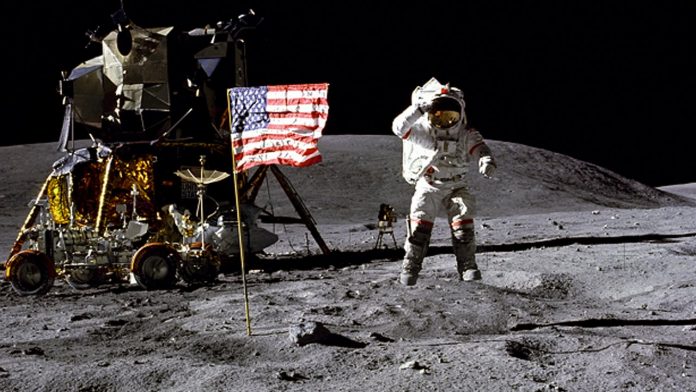
NASA announced today that it is hiring a private company to fly a golf-cart sized rover to the surface of the moon in 2023 that would roam the lunar South Pole in search of water.
The move comes as the space agency is ramping up its effort to return astronauts to the lunar surface by 2024, a schedule that is considered a long shot by many. But the landing of NASA’s Viper rover would be a significant step toward that goal, helping the space agency decide what regions astronauts should explore and how much life-sustaining water there is beneath the lunar surface, NASA officials said.
NASA awarded the contract, worth nearly $200 million to Astrobotic, to a Pittsburgh-based company, as part of a program to hire private-sector companies to deliver cargo and science experiments to the lunar surface. Unlike the Apollo missions, where astronauts visited the moon and then returned home, NASA is now working toward creating a permanent presence there under a program it calls “Artemis,” complete with systems that would help astronauts “live off the land.”
The delivery service “is going to provide a steady cadence of payloads and instruments to maximize science at the moon and to advance exploration technology,” said Thomas Zurbuchen, NASA’s associate administrator for the science mission directorate. “An important part of this work is to find out where the water is on the moon, and how much of it there is.”
The contract is another sign of how the space agency is continuing to outsource major efforts of its exploration program to the private sector. For years, it has relied on a pair of private companies, SpaceX and now Northrop Grumman, to fly cargo and supplies to the International Space Station. Last month, SpaceX also launched two NASA astronauts to the station for the first flight of humans to orbit from United States soil since the space shuttle was retired in 2011.
“Commercial partners are changing the landscape of space exploration, and VIPER is going to be a big boost to our efforts to send the first woman and next man to the lunar surface in 2024 through the Artemis program,” NASA Administrator Jim Bridenstine said in a statement.
For years, the moon was believed to be bone dry. But a decade ago, NASA discovered that water in the form of ice, exists, especially in the permanently shadowed craters of the south pole of the moon.
The discovery was heralded a breakthrough that is significant for further exploration. Water not only is important to sustain life as a liquid to drink, but when broken into its components – hydrogen and oxygen – it also could be used as air to breathe.
Those elements could also be used as rocket fuel, allowing for exploration further into space, including to Mars, officials hope.
Viper, an acronym for Volatiles Investigating Polar Exploration Rover, is a 1,000-pound rover that would roam over an area of several miles for about 100 days, officials said. It would be outfitted with sensors capable of detecting ice below the surface and a drill able to excavate samples as deep a 1 km down. It also could determine the composition and concentration of the water.
Discovering water on the moon is not just a scientific breakthrough. It also could help open up economic markets in deep space by essentially turning the moon into a gas station in space.
“The discovery of water ice at the poles is potentially a massive breakthrough for commercial opportunities in space because we can turn that water into rocket fuel,” said John Thornton, Astrobotic’s CEO. “The moon can become a destination for refueling our spacecraft to explore the moon and maybe even go further into space.”
(c) 2020, The Washington Post · Christian Davenport
{Matzav.com}












Interesting picture you’ve posted. Why is there a shadow in the picture, which was presumedly taken on the moon? Or was it a fake model done in some classroom lab then shown to the whole world to fool the lemechels?
You know that the sun shines on the moon, right?
We wonder why anyone would want to leave the honor of being on a planet. Its too crowded in the looney bin.
Will they be using cardboard and aluminum foil stuck together with Duck Tape like they did in 1969? Will their moon landing be underground in a desert in Arizona again?
If NASA can get the sheeple to believe that the astronauts were able to withstand a temperature from -225 to +243 Fahrenheit every single day and night, why not take it a step further and make them believe they can fly them to the sun where it’s only between 45 and 120,000 times hotter?